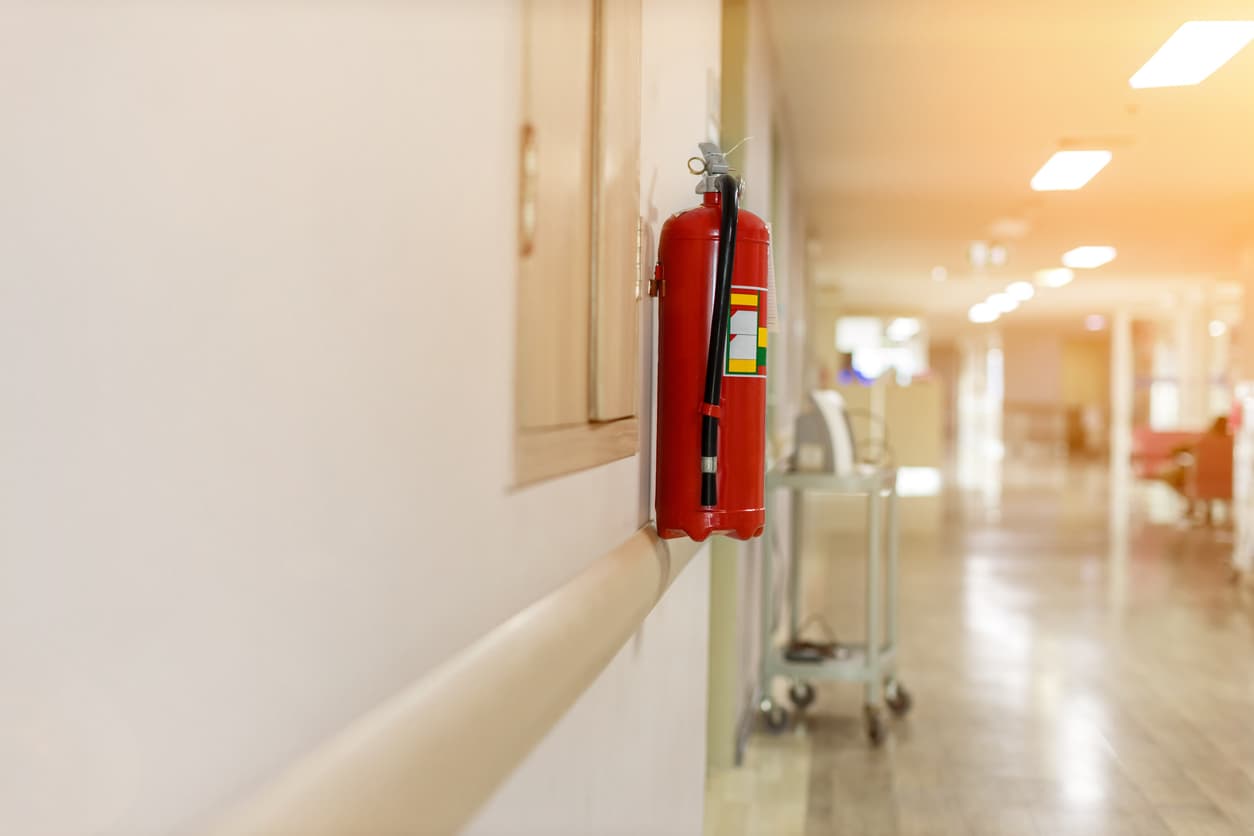In any healthcare facility, safety and regulatory compliance are critical. From properly-maintained systems like passive fire systems, fire alarms, fire sprinklers, and fire suppression systems, to inspections on fire extinguishers, and even regulatory compliance on alcohol-based hand sanitizer, there's a lot that goes into the fire and life safety plan for a hospital, nursing home, or other healthcare facility.
As you create and maintain the fire and life safety system in your healthcare facility, it’s important to keep the right considerations in mind to ensure your building, employees, and patients are protected and prepared in the case of an emergency.
Top Fire & Life Safety Systems to Consider in Healthcare Facilities
Building owners and managers, and health and safety professionals alike should be aware of the top fire and life safety systems that should be present in their healthcare facility. Properly installing, maintaining, repairing, and inspecting these systems are crucial to ensure they are in good working order to protect staff, visitors, and patients as they should. Below are just a few of the top fire and life safety systems that should never be overlooked in healthcare facilities.
Passive Fire Protection
Dampers, fire doors, and path marking systems are all examples of the important passive fire protection elements needed in a healthcare facility. Often not seen by building occupants, these systems help to contain a fire to one area, and gives first responders more time to help patients needing assistance evacuate the building. Furthermore, features such as fire doors can actually decrease overall damage to the structure, which means facilities can return to normal functions quicker after a fire.
Keeping passive fire protection systems in compliance with current standards and fire codes is essential to creating a safe environment for patients and care givers, while ensuring building assets are kept safe, as well.
Fire Extinguishers
Fire extinguishers are so commonplace that they are often overlooked, but It's critical that fire extinguishers are both accessible and recently inspected. Factors such as how large the building is, what type of fire hazards are present, and the layout of the building go into determining how many fire extinguishers are needed, where they should be placed, and what type of fire extinguisher they should be.
Just as importantly, regular inspections will ensure that your fire extinguishers are fully charged and that if they are needed, they will work the way they should.
Fire Alarms
Fire alarms are often the first warning sign to building occupants that there is an emergency and they should follow evacuation procedures. As such an important layer of protection, regular testing and inspections of fire alarms is a must in any fire and life safety plan.
These inspections should be performed by NICET-certified fire alarm specialists who are well versed in NFPA codes and local AHJ requirements.
HVAC Air Ducts
It may come as a surprise to some that properly inspecting and cleaning HVAC air ducts should be part of a fire and life safety system. Over time, dust, mold, and debris can build up in the ducts, which means unclean air is being circulated throughout the building. This is a health hazard for patients and staff who are breathing the air every day, and should be kept up with. Scheduling regular professional cleaning for HVAC air ducts is essential for health and safety, especially in healthcare facilities where air pollutants might do more harm than elsewhere.
Fire Sprinkler and Fire Pump Systems
During a fire, sprinklers can prove critical to protecting people and building assets. Sometimes, fire sprinklers can suppress the fire, while other times, they can help keep it at bay so that occupants have time to evacuate. Unfortunately if left unmonitored, over time, fire sprinkler systems can degrade or stop working as intended.
What’s more, fire pumps are essential components of a building’s fire and life safety system - especially in taller buildings like large hospitals - and also require regular maintenance and inspections to ensure they are working properly.
Employee Training
In order to provide proper protection for everyone in a healthcare facility, it's critical that effective staff training is implemented. During staff training critical elements of how to respond in the event of a fire should be covered such as how to use fire pull stations, how to properly use a fire extinguisher, where emergency exits are located, and what protocols are in place for evacuating patients. Proper training can go a long way toward ensuring that employees can react quickly and without losing their cool in a fire.
Setting Your Healthcare Facility Up for Success with Fire and Life Safety Systems
In a healthcare facility, your fire and life safety systems are a vital part of your patient care. By ensuring that the systems are regularly inspected and maintained by fire and life safety professionals, you can increase patient safety and provide a higher standard of care to them, especially in the event of an emergency.







